Abstract
Rats were trained on a discrete-trial probability learning task. In Experiment 1, the molar reinforcement probabilities for the two response alternatives were equal, and the local contingencies of reinforcement differentially reinforced a win-stay, lose-shift response pattern. The win-stay portion was learned substantially more easily and appeared from the outset of training, suggesting that its occurrence did not depend upon discrimination of the local contingencies but rather only upon simple strengthening effects of individual reinforcements. Control by both types of local contingencies decreased with increases in the intertrial interval, although some control remained with intertrial intervals as long as 30 s. In Experiment 2, the local contingencies always favored win-shift and lose-shift response patterns but were asymmetrical for the two responses, causing the molar reinforcement rates for the two responses to differ. Some learning of the alternation pattern occurred with short intertrial intervals, although win-stay behavior occurred for some subjects. The local reinforcement contingencies were discriminated poorly with longer intertrial intervals. In the absence of control by the local contingencies, choice proportion was determined by the molar contingencies, as indicated by high exponent values for the generalized matching law with long intertrial intervals, and lower values with short intertrial intervals. The results show that when molar contingencies of reinforcement and local contingencies are in opposition, both may have independent roles. Control by molar contingencies cannot generally be explained by local contingencies.
Full text
PDF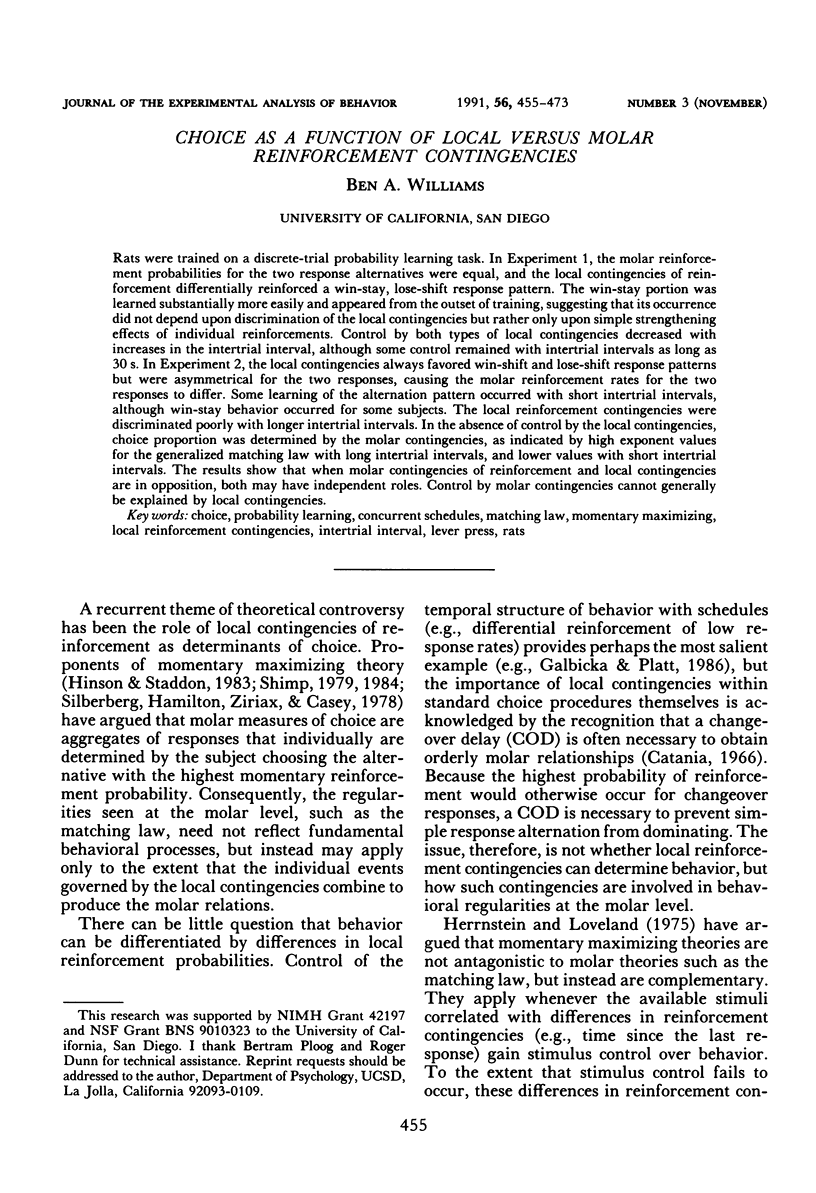
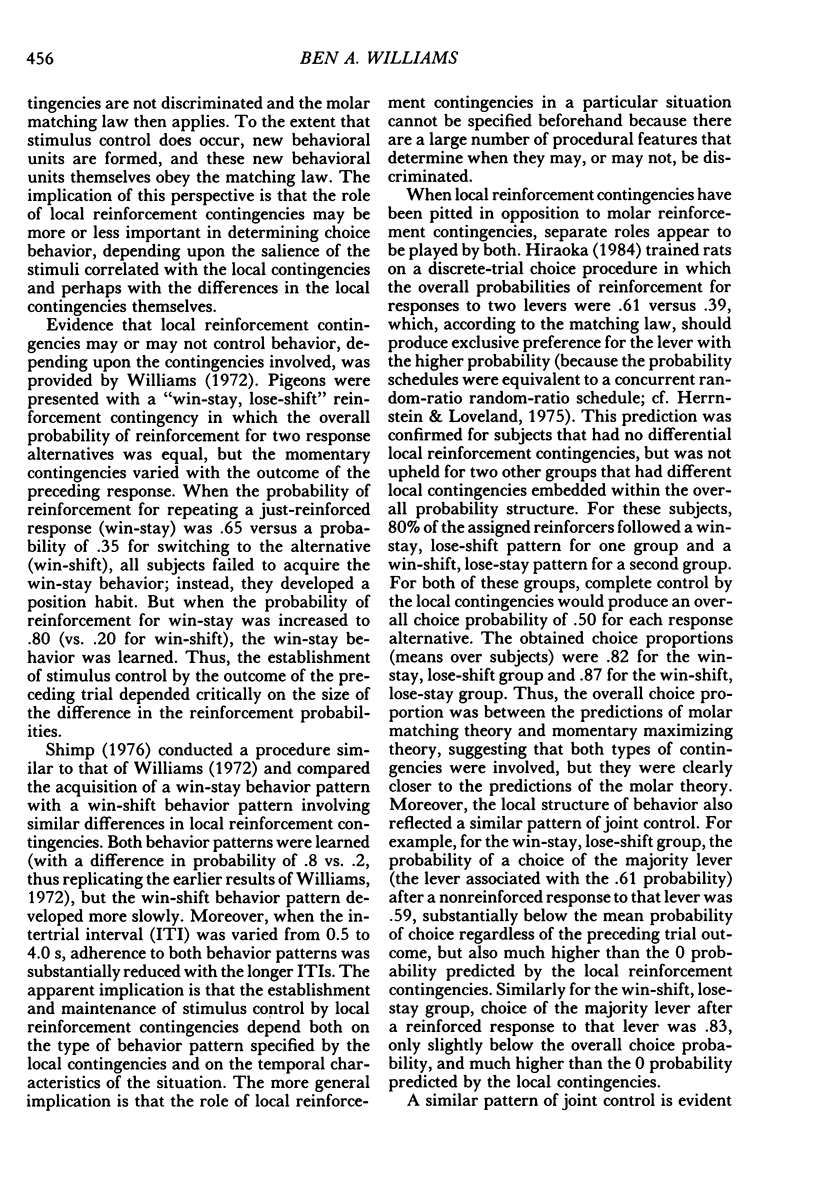

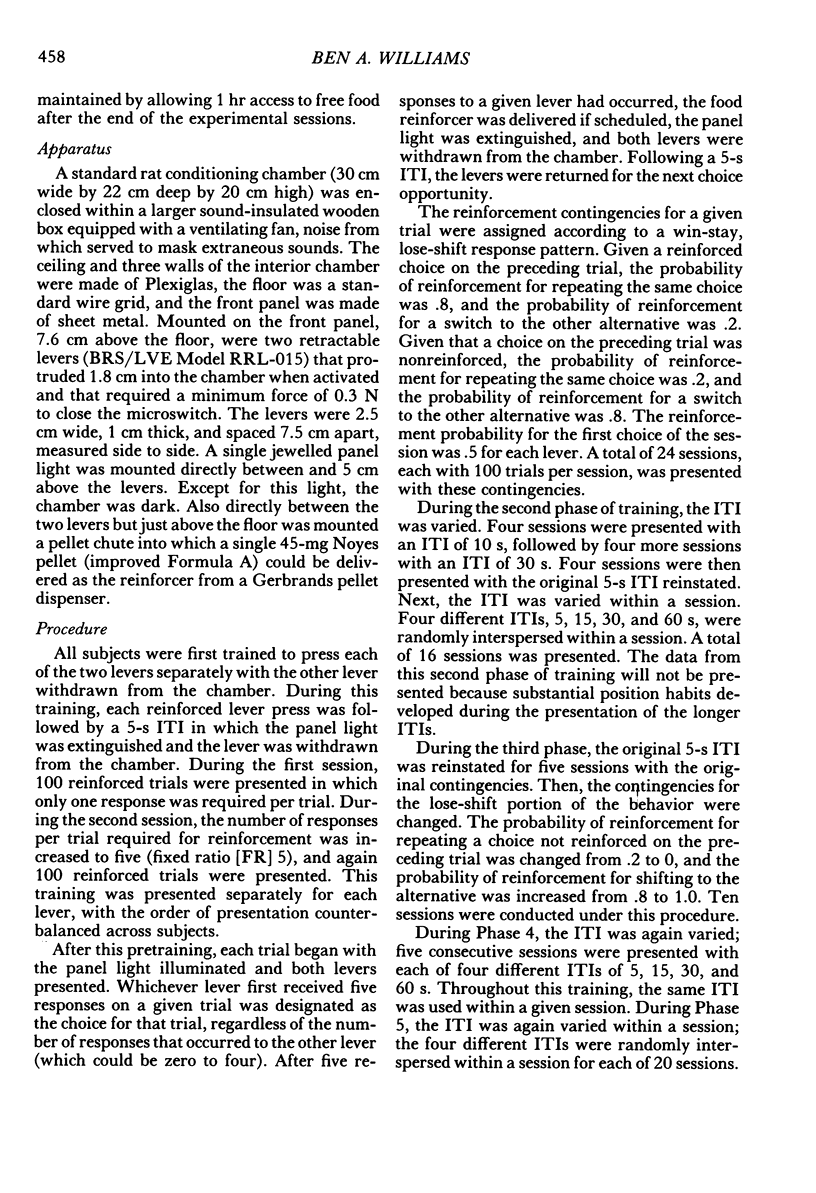

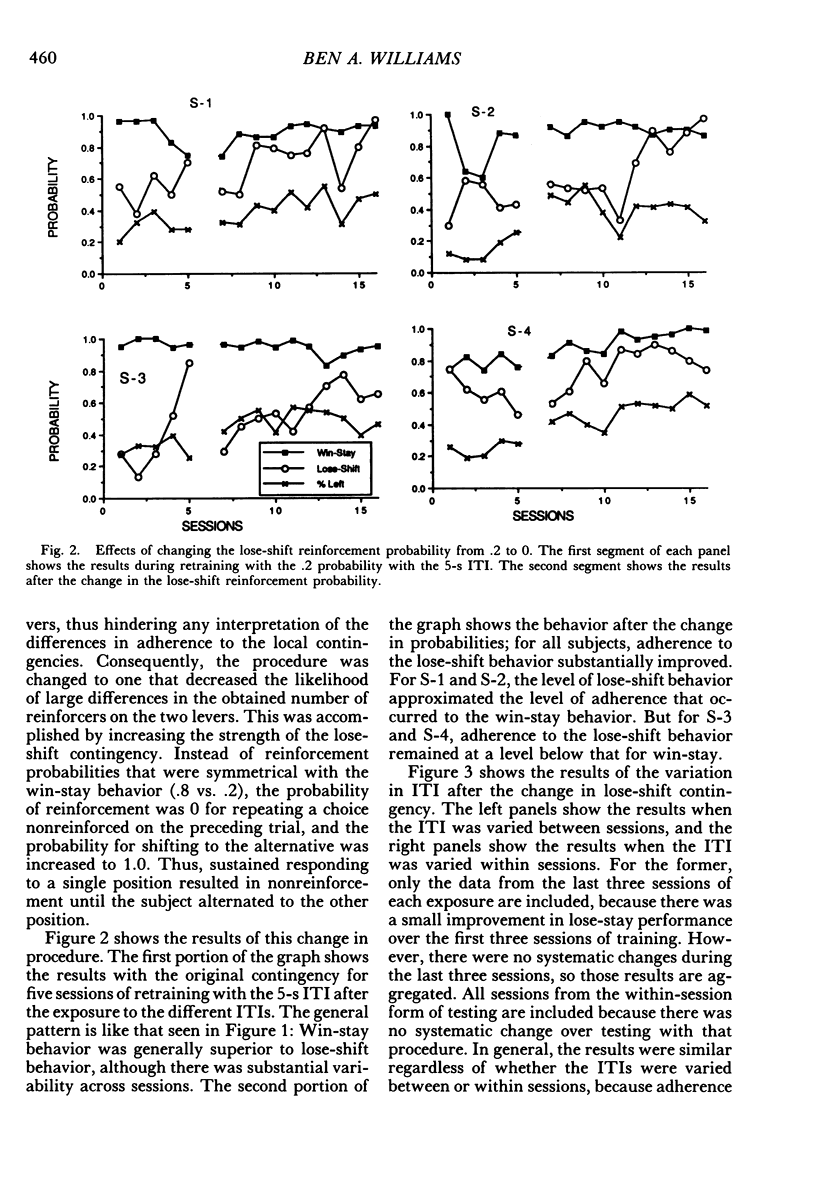

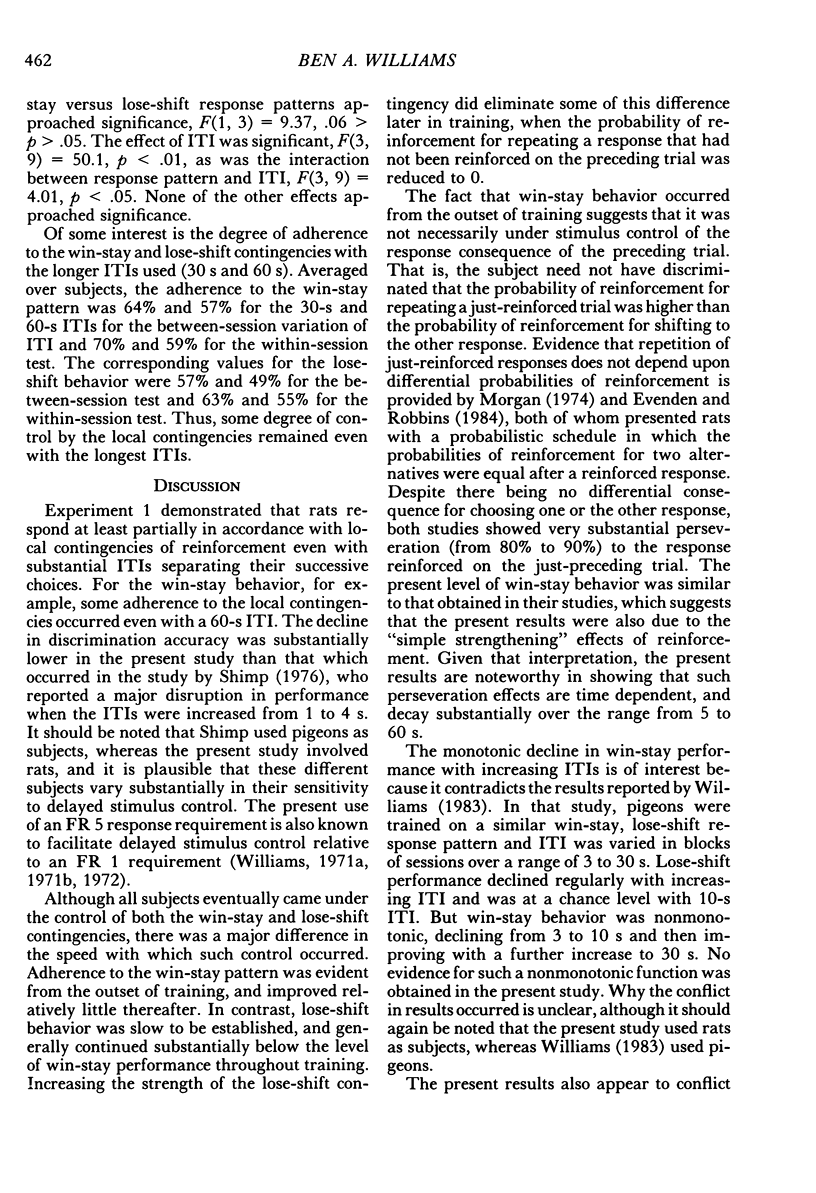
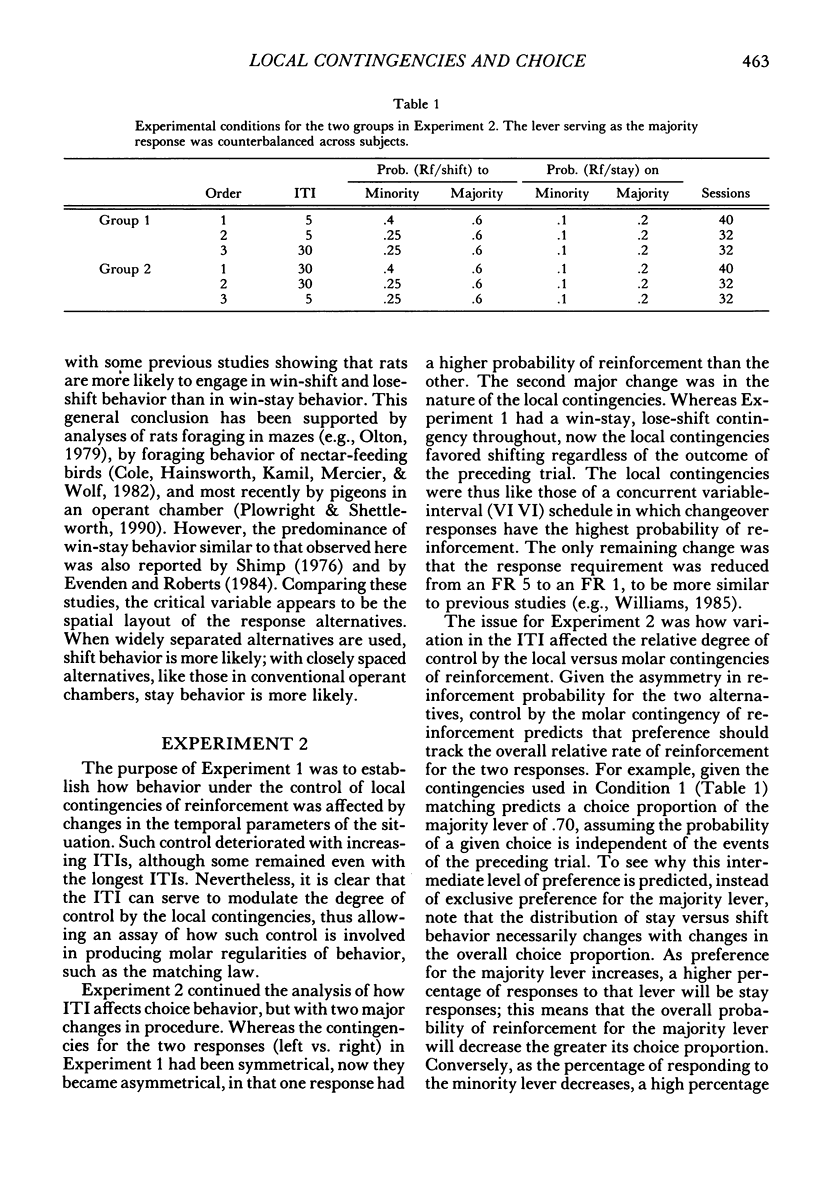
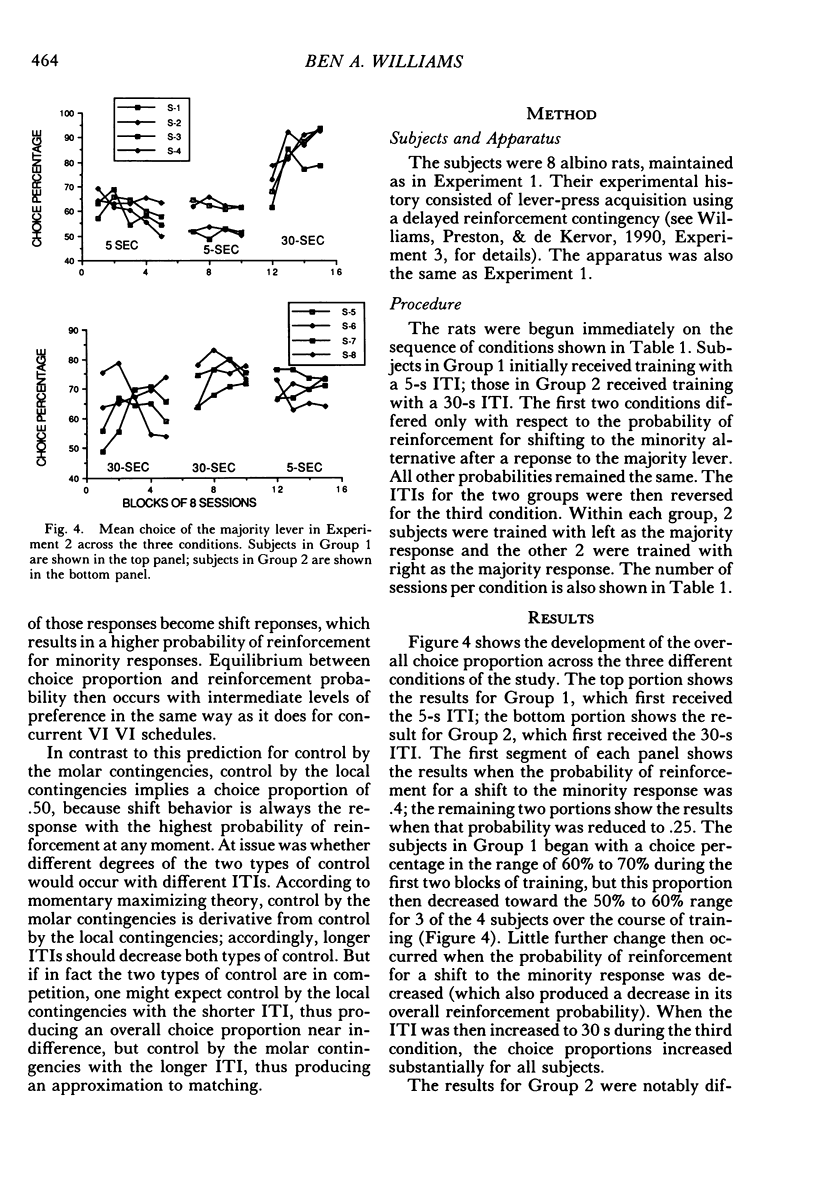
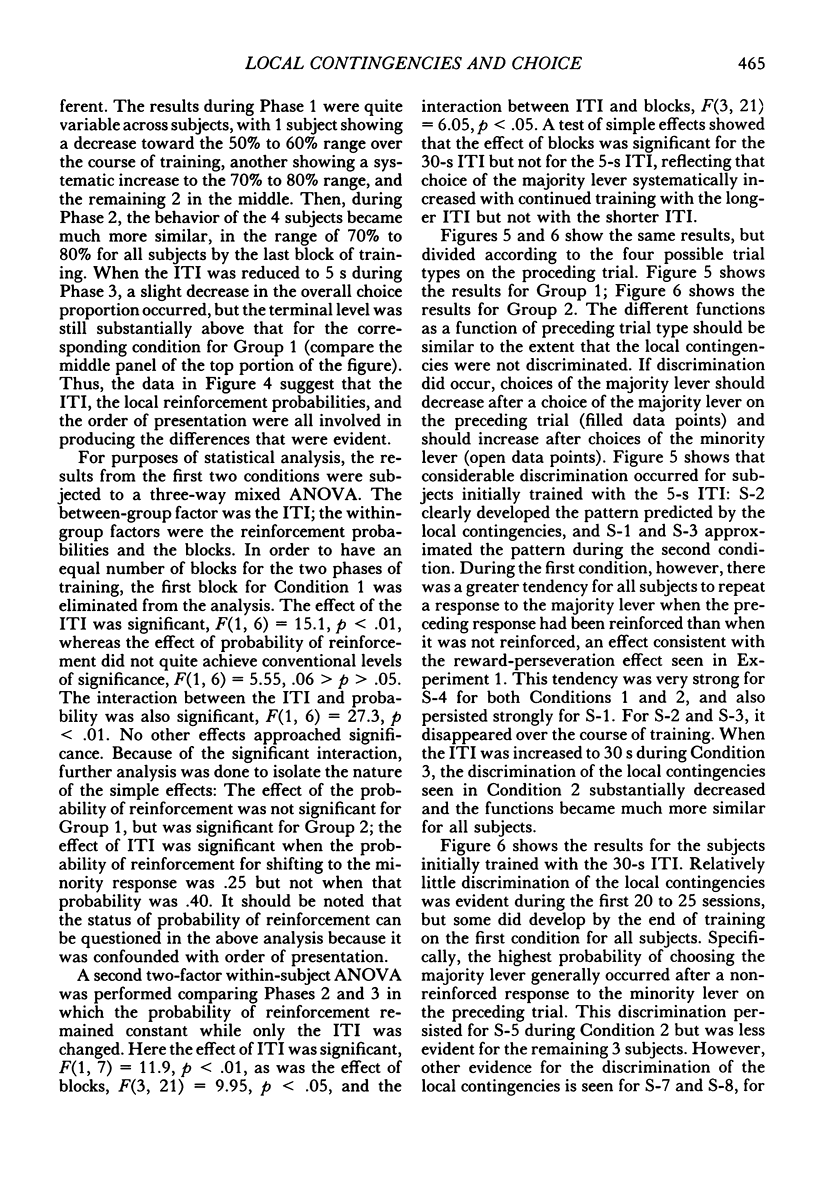
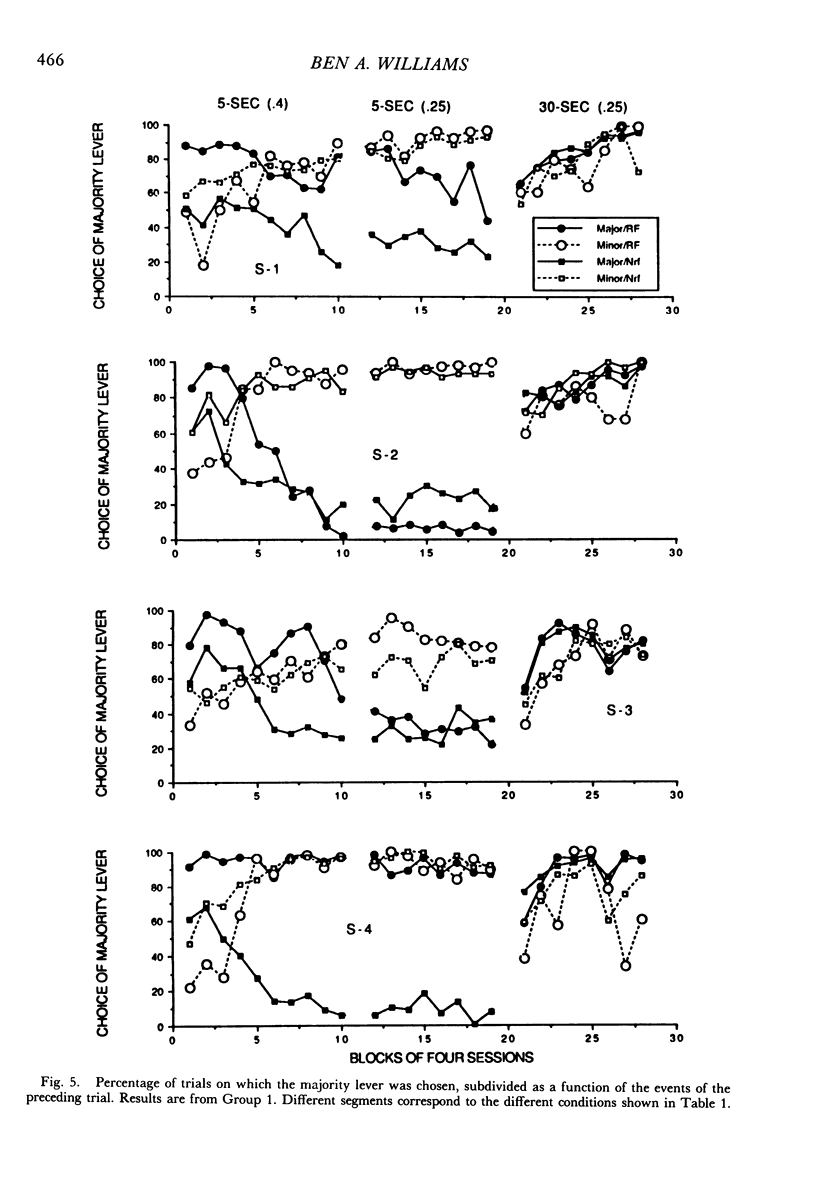
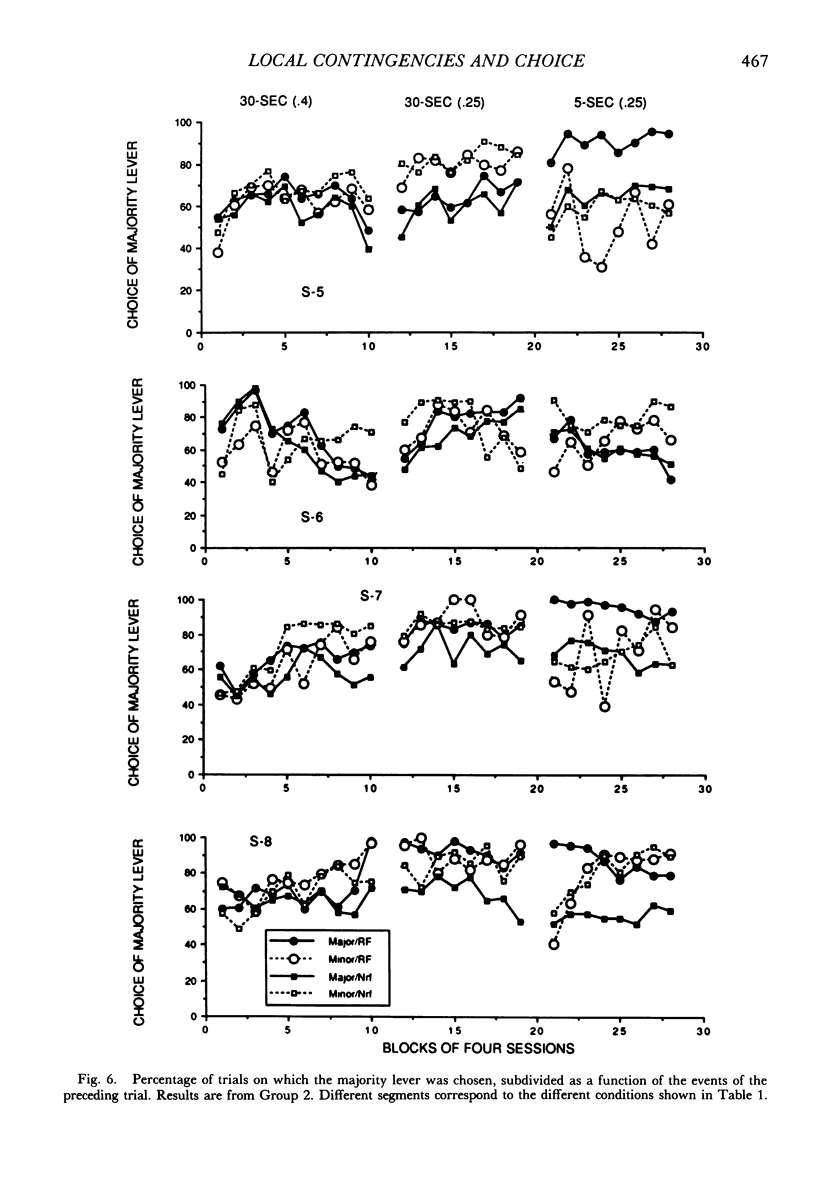
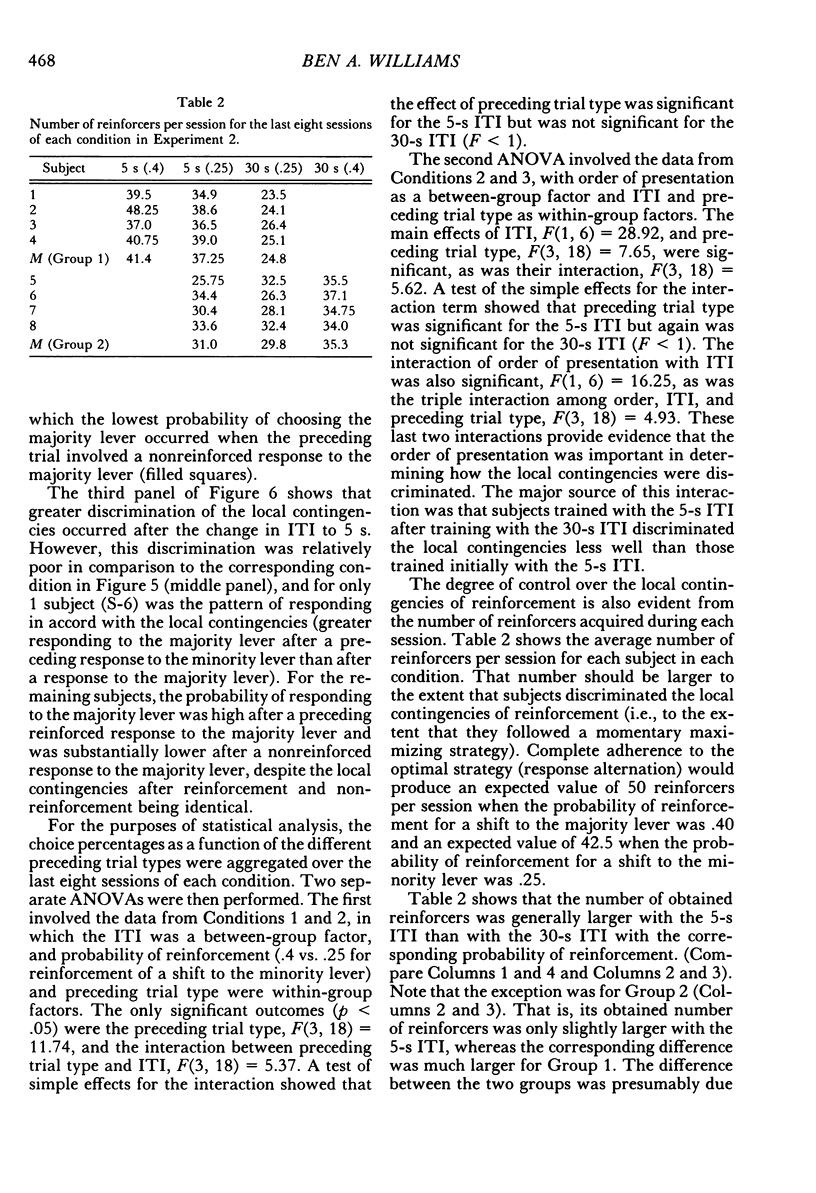
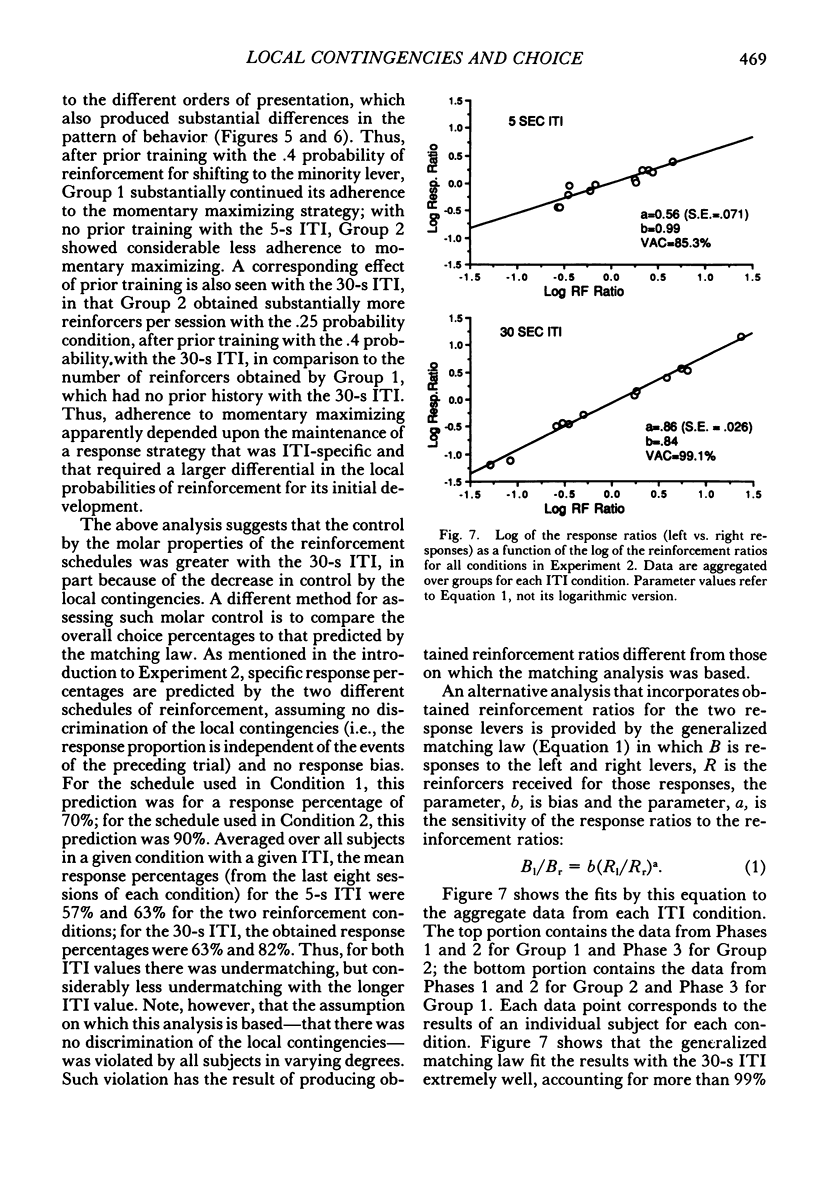

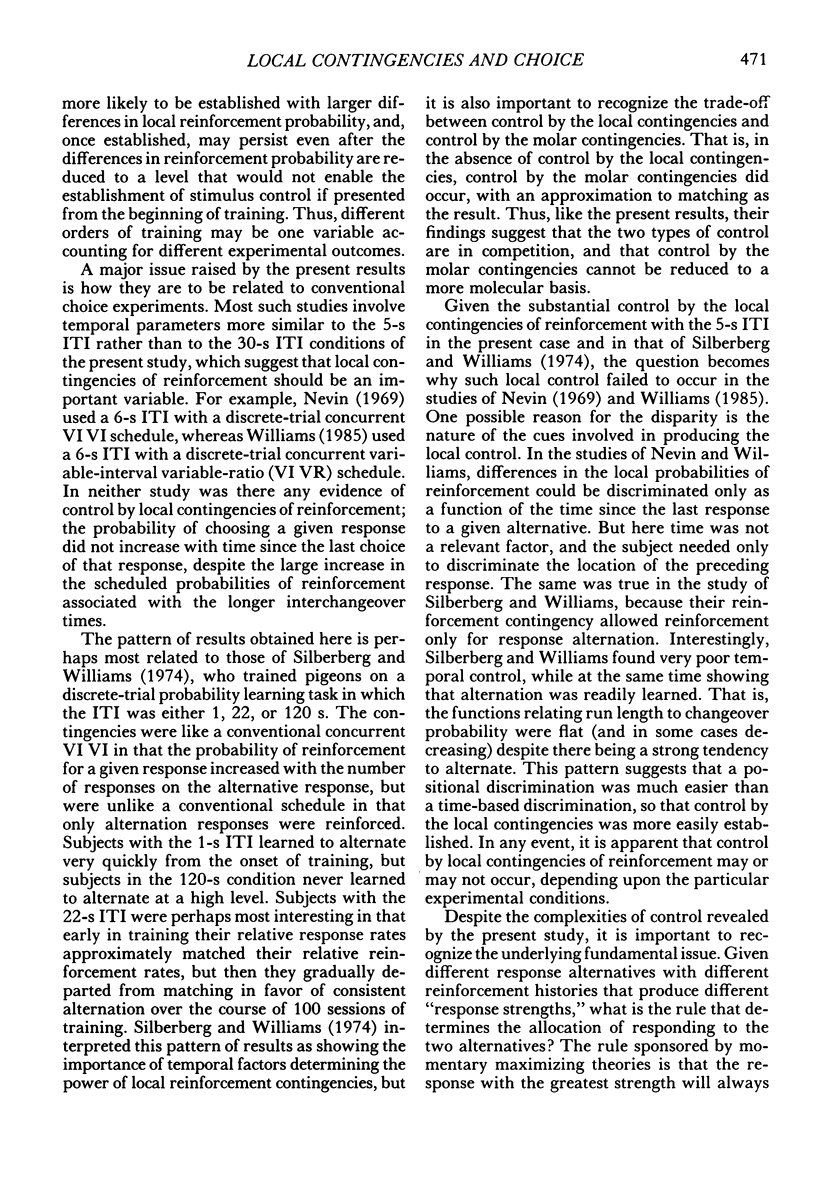
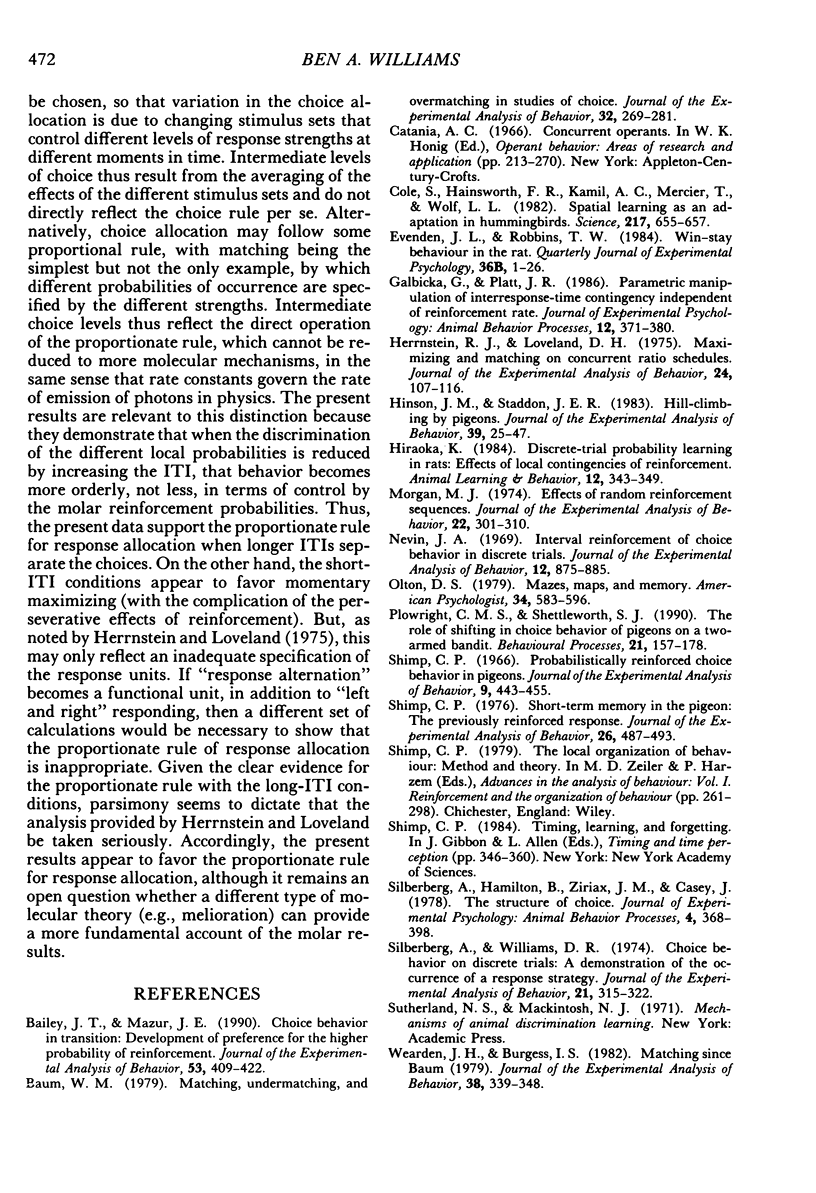
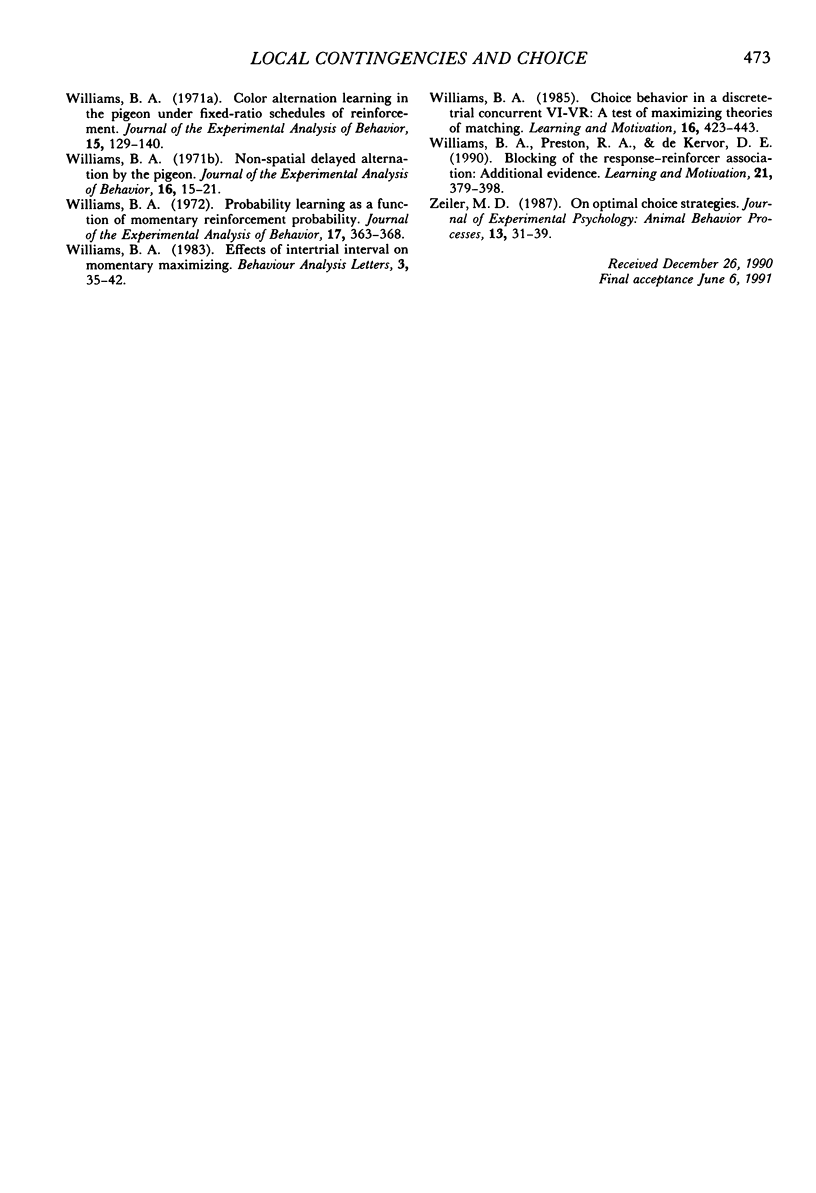
Selected References
These references are in PubMed. This may not be the complete list of references from this article.
- Bailey J. T., Mazur J. E. Choice behavior in transition: development of preference for the higher probability of reinforcement. J Exp Anal Behav. 1990 May;53(3):409–422. doi: 10.1901/jeab.1990.53-409. [DOI] [PMC free article] [PubMed] [Google Scholar]
- Baum W. M. Matching, undermatching, and overmatching in studies of choice. J Exp Anal Behav. 1979 Sep;32(2):269–281. doi: 10.1901/jeab.1979.32-269. [DOI] [PMC free article] [PubMed] [Google Scholar]
- Cole S., Hainsworth F. R., Kamil A. C., Mercier T., Wolf L. L. Spatial learning as an adaptation in hummingbirds. Science. 1982 Aug 13;217(4560):655–657. doi: 10.1126/science.217.4560.655. [DOI] [PubMed] [Google Scholar]
- Galbicka G., Platt J. R. Parametric manipulation of interresponse-time contingency independent of reinforcement rate. J Exp Psychol Anim Behav Process. 1986 Oct;12(4):371–380. [PubMed] [Google Scholar]
- Herrnstein R. J., Loveland D. H. Maximizing and matching on concurrent ratio schedules. J Exp Anal Behav. 1975 Jul;24(1):107–116. doi: 10.1901/jeab.1975.24-107. [DOI] [PMC free article] [PubMed] [Google Scholar]
- Hinson J. M., Staddon J. E. Hill-climbing by pigeons. J Exp Anal Behav. 1983 Jan;39(1):25–47. doi: 10.1901/jeab.1983.39-25. [DOI] [PMC free article] [PubMed] [Google Scholar]
- Morgan M. J. Effects of random reinforcement sequences. J Exp Anal Behav. 1974 Sep;22(2):301–310. doi: 10.1901/jeab.1974.22-301. [DOI] [PMC free article] [PubMed] [Google Scholar]
- Nevin J. A. Interval reinforcement of choice behavior in discrete trials. J Exp Anal Behav. 1969 Nov;12(6):875–885. doi: 10.1901/jeab.1969.12-875. [DOI] [PMC free article] [PubMed] [Google Scholar]
- Olton D. S. Mazes, maps, and memory. Am Psychol. 1979 Jul;34(7):583–596. doi: 10.1037//0003-066x.34.7.583. [DOI] [PubMed] [Google Scholar]
- Shimp C. P. Probabilistically reinforced choice behavior in pigeons. J Exp Anal Behav. 1966 Jul;9(4):443–455. doi: 10.1901/jeab.1966.9-443. [DOI] [PMC free article] [PubMed] [Google Scholar]
- Shimp C. P. Short-term memory in the pigeon: the previously reinforced response. J Exp Anal Behav. 1976 Nov;26(3):487–493. doi: 10.1901/jeab.1976.26-487. [DOI] [PMC free article] [PubMed] [Google Scholar]
- Silberberg A., Williams D. R. Choice behavior on discrete trials: a demonstration of the occurrence of a response strategy. J Exp Anal Behav. 1974 Mar;21(2):315–322. doi: 10.1901/jeab.1974.21-315. [DOI] [PMC free article] [PubMed] [Google Scholar]
- Wearden J. H., Burgess I. S. Matching since Baum (1979). J Exp Anal Behav. 1982 Nov;38(3):339–348. doi: 10.1901/jeab.1982.38-339. [DOI] [PMC free article] [PubMed] [Google Scholar]
- Williams B. A. Non-spatial delayed alternation by the pigeon. J Exp Anal Behav. 1971 Jul;16(1):15–21. doi: 10.1901/jeab.1971.16-15. [DOI] [PMC free article] [PubMed] [Google Scholar]
- Williams B. A. Probability learning as a function of momentary reinforcement probability. J Exp Anal Behav. 1972 May;17(3):363–368. doi: 10.1901/jeab.1972.17-363. [DOI] [PMC free article] [PubMed] [Google Scholar]


